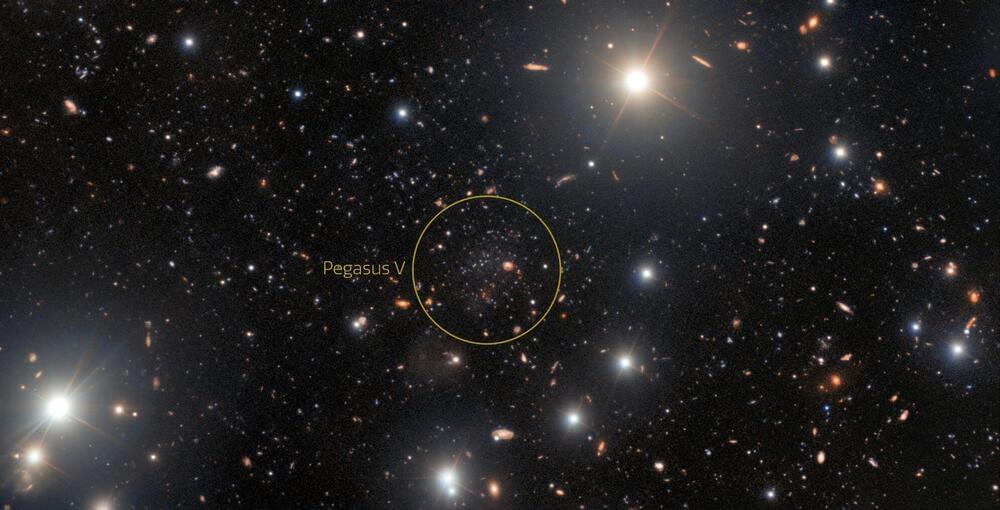Jul 3, 2022
Joscha Bach, Synthetic Intelligence
Posted by Dan Breeden in categories: neuroscience, robotics/AI
DigitalFUTURES DOCTORAL CONSORTIUM
AI, NEUROSCIENCE + ARCHITECTURE

DigitalFUTURES DOCTORAL CONSORTIUM
AI, NEUROSCIENCE + ARCHITECTURE
Samsung has begun mass production of chips using its 3nm process node __ its most advanced chip production technology yet that allows smaller chips to pack even more power.
Do supermassive black holes have friends? The nature of galaxy formation suggests that the answer is yes, and in fact, pairs of supermassive black holes should be common in the universe.
I am an astrophysicist and am interested in a wide range of theoretical problems in astrophysics, from the formation of the very first galaxies to the gravitational interactions of black holes, stars and even planets. Black holes are intriguing systems, and supermassive black holes and the dense stellar environments that surround them represent one of the most extreme places in our universe.
The supermassive black hole that lurks at the center of our galaxy, called Sgr A*, has a mass of about 4 million times that of our Sun. A black hole is a place in space where gravity is so strong that neither particles or light can escape from it. Surrounding Sgr A* is a dense cluster of stars. Precise measurements of the orbits of these stars allowed astronomers to confirm the existence of this supermassive black hole and to measure its mass. For more than 20 years, scientists have been monitoring the orbits of these stars around the supermassive black hole. Based on what we’ve seen, my colleagues and I show that if there is a friend there, it might be a second black hole nearby that is at least 100,000 times the mass of the Sun.

A unique ultra-faint dwarf galaxy has been discovered on the outer fringes of the Andromeda Galaxy thanks to the discerning eyes of an amateur astronomer examining archival data processed by NSF’s NOIRLab’s Community Science and Data Center. The dwarf galaxy — Pegasus V — was revealed to contain very few heavier elements and is likely to be a fossil of the first galaxies in follow-up observations by professional astronomers using the International Gemini Observatory, a Program of NSF’s NOIRLab.
An unusual ultra-faint dwarf galaxy has been discovered on the edge of the Andromeda Galaxy with the help of several facilities of NSF’s NOIRLab. Called Pegasus V, the galaxy was first detected as part of a systematic search for Andromeda dwarfs coordinated by David Martinez-Delgado from the Instituto de Astrofísica de Andalucía, Spain, when amateur astronomer Giuseppe Donatiello discovered a curious ‘smudge’ in data in a DESI
UPDATE — This story has been updated to include additional information from an Army press release.
WASHINGTON — The U.S. Army has opened up the competition to design and build prototypes for its Bradley Infantry Fighting Vehicle replacement, releasing a request for proposals to industry July 1 on the government contracting website Sam.gov.
The details of the RFP covering both a detailed design (phase 3) and prototyping (phase 4) are not yet publicly available.
A scientist with the Aeronautical Development Establishment told Defense News that the flight test of the aircraft — also referred to as the Stealth Wing Flying Testbed, or SWiFT — took place to demonstrate its of ability to take off, climb in altitude, cruise midair, navigate to waypoints, descend and land autonomously.
He noted that the next step is to develop a proven autonomous combat surveillance platform. The scientist spoke on the condition of anonymity because he was not authorized to speak to the media.
The 1-ton SWiFT platform is powered by a Russian NPO Saturn 36MT turbofan engine. The platform had completed taxi trials in September 2021.
It may seem like technology advances year after year, as if by magic. But behind every incremental improvement and breakthrough revolution is a team of scientists and engineers hard at work.
UC Santa Barbara Professor Ben Mazin is developing precision optical sensors for telescopes and observatories. In a paper published in Physical Review Letters, he and his team improved the spectra resolution of their superconducting sensor, a major step in their ultimate goal: analyzing the composition of exoplanets.
“We were able to roughly double the spectral resolving power of our detectors,” said first author Nicholas Zobrist, a doctoral student in the Mazin Lab.
Assistance robots are typically mobile robots designed to assist humans in malls, airports, health care facilities, home environments and various other settings. Among other things, these robots could help users to find their way around unknown environments, for instance guiding them to a specific location or sharing important information with them.
While the capabilities of assistance robots have improved significantly over the past decade, the systems that have so far been implemented in real-world environments are not yet capable of following or guiding humans efficiently within crowded spaces. In fact, training robots to track a specific user while navigating a dynamic environment characterized by many randomly moving “obstacles” is far from a simple task.
Researchers at the Berlin Institute of Technology have recently introduced a new model based on deep reinforcement learning that could allow mobile robots to guide a specific user to a desired location or follow him/her around while carrying their belongings, all within a crowded environment. This model, introduced in a paper pre-published on arXiv, could help to significantly enhance the capabilities of robots in malls, airports and other public places.
Theory underpins our understanding of convection in the Earth’s outer core and its function in controlling the planet’s magnetic field. Convective flows or how they may be changing have never been directly observed by scientists. Virginia Tech geoscientist Ying Zhou puts proof forward for the first time.
A large earthquake shook the Kermadec Islands region in the South Pacific Ocean in May 1997. A little over 20 years later, in September 2018, a second big earthquake hit the same location, with its waves of seismic energy emanating from the same region.
Although two decades separated the earthquakes, because they occurred in the same region, they’d be expected to send seismic waves through the Earth’s layers at the same speed, said Ying Zhou, a geoscientist with the Department of Geosciences at the Virginia Tech College of Science.
A recent study indicates the prevalence of brain changes from limbic-predominant age-related TDP-43 encephalopathy might be approximately 40% in older adults and as high as 50% in people with Alzheimer’s.
Alzheimer’s disease is a disease that attacks the brain, causing a decline in mental ability that worsens over time. It is the most common form of dementia and accounts for 60 to 80 percent of dementia cases. There is no current cure for Alzheimer’s disease, but there are medications that can help ease the symptoms.
